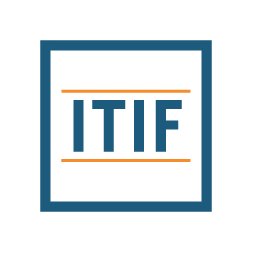To Decarbonize Federal Operations, White House Must Tackle Perverse Budget and Procurement Rules, and Focus on Areas Clean Energy Aligns With Agency Missions, New Report Concludes

WASHINGTON—When President Biden issued an executive order last December directing U.S. agencies to significantly decarbonize their vehicles, buildings, and electricity use, his goal was to leverage the federal government’s buying power to spur the market for clean energy technologies. But a new report from the Information Technology and Innovation Foundation (ITIF), the leading think tank for science and technology policy, concludes that to succeed the administration needs a plan that aligns with agency missions, provides adequate funding, and fixes perverse budget and procurement rules.
The report arrives at those conclusions after examining five decades’ worth of efforts to use federal procurement to advance national energy goals. ITIF finds the government has had only limited success, and it pinpoints key factors that explain the results.
“As the country’s largest energy consumer, the federal government can spur demand for clean energy goods and services, helping pull innovative new technology into the market and accelerating its broader adoption,” said Dorothy Robyn, a senior fellow with ITIF’s Center for Clean Energy Innovation, who authored the report. “But using procurement as the lever has had only limited success in the past, because sustainability requirements are an unfunded and unenforced mandate on budget-strapped agencies whose mission does not include clean energy. The higher up-front cost of many clean energy technologies poses a particular challenge because of the nature of the federal budget and federal procurement processes.”
The new report’s deep-dive analysis of the history of federal sustainability programs covers four areas—fleet vehicles, building operations, energy-consuming products, and renewable energy. These efforts have produced some notable successes, but federal agencies have fallen short of meeting key requirements and metrics in three of the four core areas. Obstacles have included the fact that clean energy is not the mission for most agencies; federal agencies lack adequate funding to “go green,” and perverse budget rules compound the problem; and the procurement process disadvantages clean energy choices, which often cost more up-front but yield life-cycle savings.
Sustainability requirements on federal contracting are designed to cut federal energy costs, curb greenhouse gas emissions, reduce dependence on foreign oil and create jobs. But the report concludes there is a mismatch between the policy tool—federal purchasing and asset management—and the policy goal of advancing clean energy, because budget and procurement rules are designed to reduce risk and (up-front) cost, and sustainable procurement requires a willingness to spend more up-front and accept some risk as to the payoff in lower life cycle costs.
To overcome those challenges, the report offers a detailed set of recommendations to adequately capitalize President Biden’s federal sustainability plan, reform the federal procurement process, and target clean energy investments where they best align with agencies’ missions.
“The long history of performance gaps in meeting sustainability requirements raises questions about the potential for sustainable procurement to catalyze investment and innovation—but it also points to potential solutions,” said Robyn, who served in senior appointments during the Obama administration overseeing Defense facilities and public buildings. “The administration can apply the lessons of the federal government’s decades-long experience with sustainable procurement to more effectively catalyze clean energy investment and innovation going forward.”
# # #
The Information Technology and Innovation Foundation (ITIF) is an independent, nonprofit, nonpartisan research and educational institute focusing on the intersection of technological innovation and public policy. Recognized by its peers in the think tank community as the global center of excellence for science and technology policy, ITIF’s mission is to formulate and promote policy solutions that accelerate innovation and boost productivity to spur growth, opportunity, and progress. Learn more at itif.org


